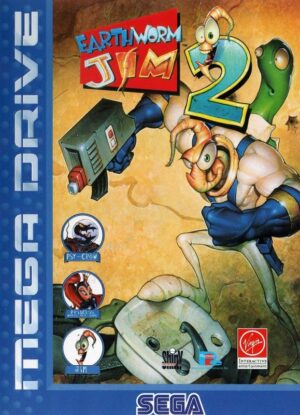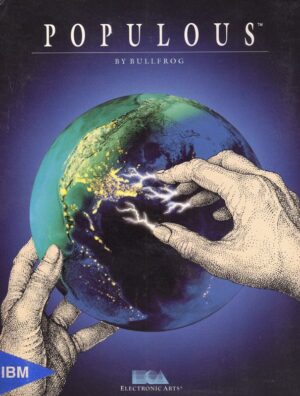Retro Replay Review
Gameplay
The core of Granhistoria: Genshi Sekaiki revolves around its dynamic history-altering system, which sets it apart from most traditional turn-based JRPGs. As Toru, you are thrust back in time mere hours before a pivotal event, giving you the unique ability to rewrite history. Through an in-game menu called the “World Chronicle,” you can review real-time updates on how your decisions are shaping political alliances, military conflicts, and the fate of entire regions. This layer of meta-narrative adds genuine weight to each choice, since you can see the ripple effects of your actions play out across the globe.
(HEY YOU!! We hope you enjoy! We try not to run ads. So basically, this is a very expensive hobby running this site. Please consider joining us for updates, forums, and more. Network w/ us to make some cash or friends while retro gaming, and you can win some free retro games for posting. Okay, carry on 👍)
Decisions are rarely binary. Do you side with the local thieves to undermine the king’s generals, or do you support the royal guard to maintain stability in the realm? Each alliance offers new missions, characters, and branching quests, encouraging multiple playthroughs. The game even tracks historical “milestones” that unlock secret dialogue and hidden events once certain conditions are met. This depth ensures that no two playthroughs feel identical and that players who invest time in exploring the options will be richly rewarded.
Combat is classic turn-based fare, with an added strategic twist: enemies can attack from multiple directions, including aerial units that force you to defend flanks and high ground simultaneously. Random encounters keep you on your toes, while specialized thief ambushes or royal patrol skirmishes introduce contextual variety. Your party formation and choice of tactics—whether to focus on crowd control, single-target nukes, or defensive holds—become critical when you face a blend of ground troops and flying foes.
Despite the intricate decision web, the overall pacing is well-balanced. The tutorial sequences are woven into the early chapters of the story, allowing you to learn about time-jump mechanics and directional combat on the fly. As you unlock new classes, skills, and equipment through side quests or faction allegiance, the game continually refreshes its strategic depth. The result is a gameplay loop that feels both familiar to JRPG veterans and novel enough to keep you engaged until the final chapter.
Graphics
Granhistoria: Genshi Sekaiki sports a vibrant art direction that blends classic pixel-art charm with modern visual effects. Character sprites are detailed and fluidly animated, giving each party member distinct personality—even in battle stances. The world maps are painted in rich hues, and the seamless day-night transitions heighten immersion, especially when you revisit locations with altered historical outcomes.
Dungeons and environments feel handcrafted, featuring clever lighting that underscores the narrative tone—dimly lit caves for early thief hideouts, grand, sun-drenched plazas in royal cities, and eerie twilight fields where you first encounter the mysterious World Sphere. Spell effects and skill animations incorporate subtle particle trails and glow effects, which pop against the more muted backgrounds without ever feeling overbearing.
Cutscenes utilize a hybrid style of static comic panels and in-engine character portraits with expressive facial animations. While not fully animated in the cinematic sense, these moments convey emotional stakes effectively, and the occasional motion blur or camera shake punctuates key dramatic beats. The UI is clean and intuitive, with the World Chronicle menu presenting historical timelines in an easy-to-digest scrollable format.
Story
The narrative hook of Granhistoria centers on Toru’s wedding day, which is abruptly interrupted by a fatal ambush from a band of thieves. The introduction is both shocking and tightly paced, immediately immersing you in the stakes—your impending marriage to Lu and the looming crisis. Before you can process what happened, the World Sphere resurrects your soul and sends you back in time to avert catastrophe.
From there, the story expands into a sprawling political drama. You begin to uncover the hidden tensions between the thieves’ leader, a disillusioned former knight, and the king’s ambitious generals. As Toru, you must mediate, manipulate, or outright challenge both sides. The game excels at balancing personal motivations—rescuing your village, protecting Lu, and preserving your own life—with broader geopolitical consequences. Each major decision carries emotional weight, as you experience firsthand the repercussions on common villagers, mercenary battalions, or the royal court.
Character development is another highlight. Toru starts as an everyman groom, but gradually evolves into a figure of legend—prophesied by the priest of Za and whispered about in clandestine rebel circles. Lu is more than a passive romantic interest; her faith in the divine and her empathy for the oppressed often challenge your cold, strategic calculations. Even secondary characters, such as a repentant thief or a jaded soldier, receive moments of genuine pathos, making the world feel alive and multi-faceted.
Overall Experience
Granhistoria: Genshi Sekaiki stands out for its ambitious marriage of time-travel mechanics and branching JRPG storytelling. The joy of seeing an entire battlefield shift because you sided with one faction over another is uniquely satisfying. The tension created by reading real-time historical updates—knowing that a single misstep could plunge an entire kingdom into war—is a constant motivator to explore every narrative avenue.
Performance is solid across the board, with load times that never feel intrusive and frame rates that remain stable even during large-scale battles. The soundtrack complements the epic scope, featuring stirring orchestral themes for major plot points and more intimate acoustic pieces for character-driven scenes. Voice snippets during key cutscenes add further polish without overshadowing the well-crafted text dialogues.
While the complexity of branching choices can be daunting at first, the in-game hints and optional tutorials ensure you never feel lost. The satisfaction of piecing together the optimal historical path and witnessing its final outcome creates a strong urge to replay, investigating “what if” scenarios until you’ve seen every major twist. For fans of narrative-driven RPGs and strategic turn-based combat, Granhistoria: Genshi Sekaiki offers a memorable journey filled with moral quandaries, political intrigue, and heartfelt moments that resonate long after the credits roll.
 Retro Replay Retro Replay gaming reviews, news, emulation, geek stuff and more!
Retro Replay Retro Replay gaming reviews, news, emulation, geek stuff and more!








Reviews
There are no reviews yet.